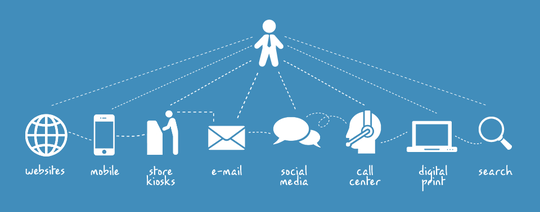6 Best Practices for Omnichannel Marketers
It wasn't too long ago that the consumer in the market for new home exercise equipment would visit her local department or sporting goods store to test out the options and compare the prices. Maybe she would buy a new treadmill on the spot, or perhaps she would first talk to friends for recommendations, or read some reviews in a magazine like Consumer Reports. Once convinced of the right make, model, and price, she would pull out her credit card or checkbook and make a purchase.
Fast-forward to 2015, where the buying landscape couldn't be more different. Thanks to the Internet as a whole, social media, online reviews, the proliferation of online retailers, and the growth of web-based behemoths like Amazon, the same consumer takes a decidedly different approach when buying exercise equipment (or buying anything for that matter). Add laptops, mobile devices, and smartphones to the mix and you create a selling environment that includes everything from bricks-and-mortar sales to website purchases to smart TV shopping.
In this "omnichannel marketing" playground, companies have to balance a growing number of customer touchpoints with the need to deliver a consistent and seamless experience across those various channels. Here are six essential practices that will help marketers achieve this goal:
1. Focus on delivering a unified experience. It sounds simple enough in theory, but maintaining consistency across various shopping channels is an ongoing challenge for today's omnichannel marketers. To overcome this challenge, take a holistic viewpoint on all marketing, advertising, sales, and even product return activities. The overarching goal should be for the customer to feel like she's shopping at the same store and being treated the same way - whether it's online or offline. In some cases, this may mean taking the focus off individual channel performance (i.e., different revenue goals and/or reporting mechanisms) and structuring the organization in a cohesive and holistic manner.
2. Adopt integrated strategies across all channels. For best results, omnichannel marketers need to adopt integrated strategies across their various advertising channels (TV, online, print, etc.) and then use multivariate testing (i.e., a technique for testing a hypothesis in which multiple variables are modified) to determine landing page conversions, display ad effectiveness, and other important measurements. Look at how the consumer engages with your brand across all platforms, and then use that information to draw insights into response frequency, buying preferences, and transactions.
3. Put your customers at the center of your omnichannel strategy. As you break down any organizational silos mentioned in principle #1 above, think about putting your customer at the center of your omnichannel approach. Understand that social media and mobile shopping aren't going away, and that consumers expect, if not demand, to be able to use these tools to research product options, explore opportunities, and make their ultimate buying decisions (i.e., reading product reviews on their smartphones while they're standing in the retail store aisle, for example). Bottom line: Put as much information as possible at your customers' fingertips.
4. Make each piece of the consumer's experience consistent and complementary. In The Definition of Omni-Channel Marketing - Plus 7 Tips ,marketing automation provider Marketo says that today's omnichannel marketers need to provide a seamless experience, regardless of channel or device. "Consumers can now engage with a company in a physical store, on an online website or mobile app, through a catalog, or through social media," according to Marketo. "They can access products and services by calling a company on the phone, by using an app on their mobile smartphone, or with a tablet, a laptop, or a desktop computer. Each piece of the consumer's experience should be consistent and complementary."
5. Brace yourself for a lot of testing and learning. One of the biggest mistakes companies make in the omnichannel space is believing they're going to find the magic formula on the first or second attempt. This clearly isn't the case. In fact, identifying the right formula and putting it in place takes time, patience, and perseverance. And while digital media allows you to obtain results very quickly, it doesn't necessarily prepare you for a consumer response, nor does it answer the question: How are consumers going to find our products or services?
6. Use data analytics to make the best possible omnichannel decisions. Having all of the numbers and statistics at your fingertips is one thing, but actually using the data effectively is a completely different exercise . Use the data to predict where the consumer is going to be, how he or she will be buying, and how you can reach him or her in that setting - and at the right time. Use the data to stay ahead of the curve and to not only execute on a one-time basis, but also to duplicate the data in a way that allows you to repeat the successes and avoid the mistakes.
By factoring these six essential practices into your company's omnichannel marketing strategy, you'll be well braced to take advantage of the benefits of omnichannel without having to allocate excessive time and energy to the task. Be patient with the progress and results, always test new techniques and selling strategies before officially launching them, and - perhaps most importantly - always keep your customers at the center of your approach. Only then will you be able to fully benefit from the very real power of omnichannel marketing.
This contributed article was written by Jessica Hawthorne-Castro, CEO of Hawthorne Direct.


